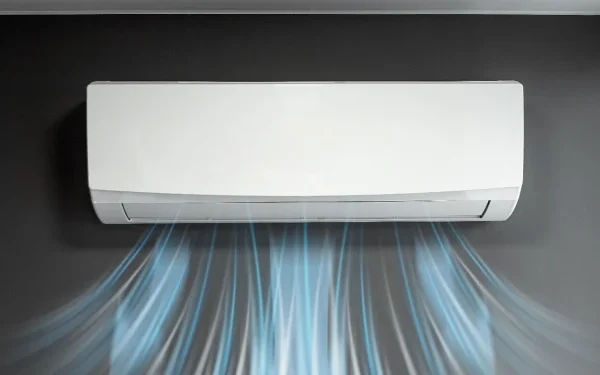Air conditioners (ACs) have become a necessity for millions of households worldwide, especially in countries with hot and humid climates. In the peak of summer, when temperatures soar well above comfort levels, the soothing cool air from an AC can be a lifesaver. However, this comfort comes at a price — and for many families, that price is a skyrocketing electricity bill.
This has led to a common question among homeowners and renters alike: “Is it cheaper to keep the AC running continuously, or should you turn it off from time to time to save money?”
The answer, according to experts, is not as straightforward as it may seem. While there are general rules of thumb, the actual cost-saving strategy depends on how, when, and for how long you use your AC.
Understanding How an AC Consumes Power
Before diving into whether you should keep your AC on or off, it’s important to understand how it works and what causes it to consume electricity.
1. The Role of the Compressor
The compressor is the heart of an air conditioner. Its job is to circulate refrigerant, which absorbs heat from the indoor air and releases it outside.
When you set your AC to a certain temperature, the compressor turns on and works until that temperature is reached. Once the desired temperature is achieved, the compressor shuts off, and the AC fan continues to circulate air.
2. Why Continuous Operation Can Be Expensive
If you keep your AC on continuously at a low temperature (say, 20°C or lower), the compressor will cycle on and off frequently to maintain that cool setting. These repeated cycles consume significant energy.
Even though the compressor turns off at intervals, keeping the AC running for long hours still uses a lot of electricity over time.
3. The Myth About Start-Up Energy
Many people believe that turning an AC off and then back on consumes more energy than keeping it running. While it’s true that the compressor draws extra current in the first few seconds after starting, this initial surge is minimal compared to the electricity used by hours of continuous operation.
In other words, the small spike at startup is not enough to outweigh the benefits of turning the AC off for extended periods.
The Financial Perspective — When to Keep It On and When to Turn It Off
If the primary concern is saving money, research and expert advice suggest that it’s usually more cost-effective to turn the AC off periodically — but the timing and duration matter.
Short Usage Periods
If you’re going to be in a room for less than an hour, it’s fine to keep the AC running continuously during that time. This avoids multiple start-stop cycles and keeps the room at a steady temperature.
Moderate Usage Periods
If you’re using the AC for a few hours (for example, during the night while sleeping), set the thermostat to 25–26°C and use the Eco or Energy Saver mode. These modes allow the compressor to take breaks without completely shutting off the AC, balancing comfort with energy savings.
Extended Absences
If you plan to leave the room or house for one to two hours or more, it’s better to turn off the AC completely.
For longer absences — like leaving home for work during the day — keep the AC off and turn it back on 15–20 minutes before you expect to return. Many modern AC units and smart plugs allow you to do this remotely via mobile apps.
The Thermostat Advantage
One of the smartest ways to optimize AC usage is by using a programmable thermostat or timer.
Why Set the Temperature to 24–26°C?
- It reduces compressor workload
- It maintains comfort without overcooling
- It prevents excessive humidity buildup
When the thermostat is set in this range, the AC cycles less frequently, and the compressor gets more rest periods, resulting in lower energy consumption.
Practical Energy-Saving Strategies for AC Users
Here are some proven tips to help you keep cool while also keeping your electricity bills in check:
1. Use Energy Saver or Eco Mode
Most modern ACs come with these modes, which automatically regulate compressor operation to optimize power usage.
2. Seal Leaks and Insulate
Cool air can easily escape through gaps in windows, doors, and poorly insulated walls. Make sure your space is sealed so the AC doesn’t have to work harder.
3. Combine AC with Fans
Using ceiling or pedestal fans helps distribute cool air more evenly, allowing you to set the thermostat a few degrees higher without sacrificing comfort.
4. Avoid Frequent On/Off Switching
Turning the AC on and off every 10–15 minutes is counterproductive. It not only wears out the compressor faster but also increases short-term electricity spikes.
5. Clean Filters Regularly
Clogged filters restrict airflow, forcing the AC to work harder and use more power. Cleaning or replacing filters every month during peak season is a must.
6. Close Curtains and Blinds
Direct sunlight can heat up a room quickly. Keeping curtains drawn during the hottest part of the day can help the AC maintain a cooler temperature with less effort.
7. Upgrade to an Inverter AC
If you’re replacing your AC, consider an inverter model. Inverter technology adjusts compressor speed dynamically, making it far more energy-efficient than traditional units.
Cost-Saving Formula for AC Usage
A simple rule of thumb for balancing comfort and cost:
- For short cooling needs (30–60 minutes) — Keep the AC running at a moderate temperature.
- For medium cooling needs (2–3 hours) — Use thermostat control with Eco mode.
- For long absences (2+ hours) — Turn off the AC entirely.
Following this approach can help reduce your energy bill significantly over time.
The Environmental Factor — Saving Energy Helps the Planet Too
While the primary motivation for many is financial, there’s an equally important environmental reason to use AC efficiently. Excessive electricity usage increases demand on power plants, many of which burn fossil fuels. This contributes to greenhouse gas emissions and climate change — ironically making summers even hotter in the long run.
By being mindful of AC usage:
- You save money
- You extend the lifespan of your AC unit
- You reduce your carbon footprint
Final Takeaway
Running your AC 24/7 might feel like the most comfortable option, but it’s rarely the most economical one. Turning the AC off when you don’t need it, using thermostat control, and maintaining the unit properly can cut your cooling costs significantly without sacrificing comfort.
The key lies in smart usage — adjusting based on your schedule, setting the right temperature, and taking advantage of modern energy-saving features. In the end, you’ll not only feel cooler in your home but also cooler about your electricity bill.

























